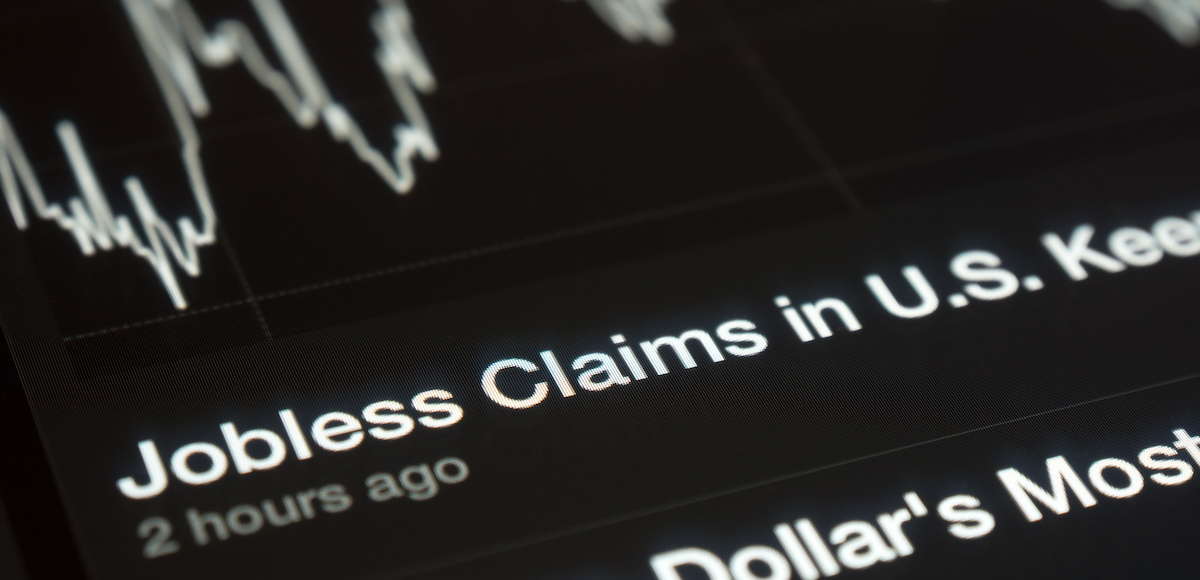

U.S. jobless claims graph on a tablet screen.
The Labor Department said jobless claims for the week ending June 16 fell another 3,000 to a seasonally adjusted 218,000. The 4-week moving average was 221,000, a decrease of 4,000 from the previous week’s revised average.
Extended Benefits were payable in the Virgin Islands during the week ending June 2.
The advance seasonally adjusted insured unemployment rate remained unchanged at a very low 1.2% for the week ending June 9. The advance number for seasonally adjusted insured unemployment during the week ending June 9 was 1,723,000, a gain of 22,000 from the previous week’s revised level.
The previous week’s level was revised up 4,000 from 1,697,000 to 1,701,000. The 4-week moving average was 1,722,500, a decrease of 4,750 from the previous week’s revised average.
This is the lowest level for this average since December 8, 1973 when it was 1,715,500. The previous week’s average was revised up by 1,000 from 1,726,250 to 1,727,250.
The highest insured unemployment rates in the week ending June 2 were in the Virgin Islands (3.5), Alaska (2.5), New Jersey (2.0), Connecticut (1.9), California (1.8), Puerto Rico (1.8), Pennsylvania (1.6), Illinois (1.5), Nevada (1.4), and Rhode Island (1.4).
The largest increases in initial claims for the week ending June 9 were in Pennsylvania (+6,023), California (+4,591), Florida (+2,542), Texas (+2,277), and New Jersey (+1,598), while the largest decreases were in Missouri (-719), Arkansas (-520), Mississippi (-512), New Mexico (-325), and Alabama (-202).
The most damning journalistic sin committed by the media during the era of Russia collusion…
The first ecological study finds mask mandates were not effective at slowing the spread of…
On "What Are the Odds?" Monday, Robert Barnes and Rich Baris note how big tech…
On "What Are the Odds?" Monday, Robert Barnes and Rich Baris discuss why America First…
Personal income fell $1,516.6 billion (7.1%) in February, roughly the consensus forecast, while consumer spending…
Research finds those previously infected by or vaccinated against SARS-CoV-2 are not at risk of…
This website uses cookies.
View Comments
@PuggySueR And the really strange part about that is there's twice as many people working now that there were in 1973